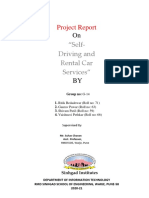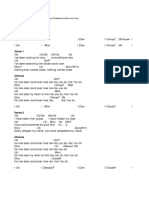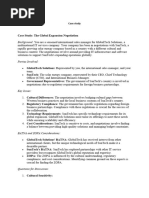0 ratings0% found this document useful (0 votes)
55 views2nd Quarter Exam in PE 12
2nd Quarter Exam in PE 12
Uploaded by
Eddie M. Cuesta Jr.Copyright:
© All Rights Reserved
Available Formats
Download as DOCX, PDF, TXT or read online from Scribd
2nd Quarter Exam in PE 12
2nd Quarter Exam in PE 12
Uploaded by
Eddie M. Cuesta Jr.0 ratings0% found this document useful (0 votes)
55 views3 pagesOriginal Title
2nd quarter Exam in PE 12
Copyright
© © All Rights Reserved
Available Formats
DOCX, PDF, TXT or read online from Scribd
Share this document
Did you find this document useful?
Is this content inappropriate?
Copyright:
© All Rights Reserved
Available Formats
Download as DOCX, PDF, TXT or read online from Scribd
Download as docx, pdf, or txt
0 ratings0% found this document useful (0 votes)
55 views3 pages2nd Quarter Exam in PE 12
2nd Quarter Exam in PE 12
Uploaded by
Eddie M. Cuesta Jr.Copyright:
© All Rights Reserved
Available Formats
Download as DOCX, PDF, TXT or read online from Scribd
Download as docx, pdf, or txt
You are on page 1of 3
Biliran National Agricultural High School
Second Quarter Examination in PE-12
Directions: Read each question carefully. Choose the letter of the correct answer. Use a separate sheet of paper for your
answers.
1. The most common position used in modern standard ballroom.
a. Closed position b. Open hold c. Tango d. Promenade position
2. This dance is defined by a slow, methodical glide with feet on the floor and weight on the ball of the feet, followed by
fast directional shifts and a sensual dance.
a. Tango b. Foxtrot c. Quickstep d. Waltz
3. It is the earliest ballroom dance style, having originated in Italy.
a. Waltz b. Tango c. Quickstep d. Foxtrot
4. This modern standard dance was created in 1914 in the United States and gained popularity in the 1930s
and 1940s.
a. Foxtrot b. Tango c. Quickstep d. Waltz
5. It was created in New York City in the 1920s and was first danced by African Americans. Its origins can be traced back
to a blend of sluggish foxtrot and Charleston.
a. Quickstep b. Tango c. Foxtrot d. Waltz
6. Recognize possible harmful situations and identify steps to take to lessen the risks of accidents. (example: do not plug
electrical devices when your hands are wet)
a. Knowledge & Awareness b. Ability c. State of mind d. Environment condition
7. Be realistic in judging your and your teammates’ abilities and skill level.(example: avoid doing stunts in cheer dancing
if you are not confident and capable of)
a. Knowledge & Awareness b. Ability c. State of mind d. Environment condition
8. Always be aware of your own and your teammates’ condition.(example: tired, distressed, under the influence of
alcohol and drugs is likely to meet an accident)
a. Knowledge & Awareness b. Ability c. State of mind d. Environment condition
9. One must consider the environmental hazards that might cause an accident. (example: performing on a wet floor is
dangerous)
a. Knowledge & Awareness b. Ability c. State of mind d. Environment condition
10. Excessive loss of water from the body, usually through perspiration or sweating, urination, or evaporation.
a. Overexertion b. Hyperthermia c. Hypothermia d. Dehydration
11. Refers to the detrimental cause of excessive training. Some athletes often push too hard in their pursuit of high-level
performance.
a. Overexertion b. Hyperthermia c. Hypothermia d. Dehydration
12. An alarming rise in body temperature, which an effect of exercising a very humid environment. (normal body
temperature – 36.5-37.5 degrees Celsius).
a. Overexertion b. Hyperthermia c. Hypothermia d. Dehydration
13. Excessively low body temperature, characterized by uncontrollable shivering, loss of coordination, and mental
confusion.
a. Overexertion b. Hyperthermia c. Hypothermia d. Dehydration
14. These are the factors in creating or planning personal safety protocol.
a. Mind, body, spirit c. State of mind, ability, & awareness
b. Hydration, grooming, safety d. None of the above
15. In engaging in Zumba dances, we should consider the following measure/s;
a. Make-up & shoes c. New bag & new lipstick
b. Water & extra shirt d. All of the above
16. The following are correct about stretching, EXCEPT.
a. Hold stretches for a minimum of 10 minutes. c. Breath slowly.
b. Stretch before & after Zumba. d. Stretch gently.
17. What is the importance of having & observing a personal safety protocol?
a. It can make our body healthy. c. It can give us strength.
b. It will prevent any injuries. d. It will give nourishment.
18. Signs of hypothermia EXCEPT:
a. Shivering b. Pale, cold skin c. Slow weak pulse d. All of the them
19. a sensation of dryness in the mouth and throat associated with a desire for liquids.
a. Fatigue b. Thirst c. Sweating d. a and c
20. – on a normal day, the body loses about 2.5 liters of water. (urine, feces, perspiration)
a. True b. False
21. Which of the following is correct about Standard ballroom dances?
a. They are smooth and flowing ballroom dances that move around the entire dance floor in a counterclockwise
movement
b. They are energetic dances which reflect the shift in rhythm of the music being danced to
c. They had a rich cultural history rooted in the traditional dances of native peoples of Latin America.
d. Both a and b are correct
22. Which of the following best describes Latin ballroom dances?
a. They are smooth and flowing ballroom dances that move around the entire dance floor in a counterclockwise
movement
b. They are energetic dances which reflect the shift in rhythm of the music being danced to
c. They had a rich cultural history rooted in the traditional dances of native peoples of Latin America
d. Both b and c are correct
23. The following are Standard ballroom dances except one. Which one is it?
a. Waltz b. Tango c. Jive d. Foxtrot
24. Which of the following does not belong to the group?
a. Cha-cha-cha b. Quick Step c. Samba d. Rumba
25. The following are the nature and characteristics of Waltz except one. Which one is it?
a. The music time signature is ¾
b. It is considered as “mother of present-day dances” and the “backbone dance” of the ballroom
c. It travels around the line of dance, characterized by its “rise and fall” action
d. None of the above
26. Which of the following best describes Quickstep?
a. The music used is usually jazz or swing motion
b. It is a sensual standard ballroom dance
c. It is a lively Latin ballroom dance performed to rock and roll music
d. Its time signature is 2/4
27. Some are safety protocols in order to avoid dizziness as a result to overexertion, except one. Which one is it?
a. Quit smoking
b. Cool down and rest for a few minutes
c. Stay hydrated by drinking plenty of fluids before, during and after dancing
d. None of the above
28. Any activity that involves exercise in warm, and humid environments increases the risk of ______.
a. dehydration b. overexertion c. hyperthermia and hypothermia d. all of the above
29. Why is hydration important during physical activity?
a. It replaces the fluid loss of the body c. It regulates body temperature
b. It delivers nutrients to cells and keep organs functions properly d. All of the above
30. Dancing on time with the music.
a. Posture b. Line c. Hold Timing
31. Standard Ballroom Dance-A smooth flowing dance that move around the entire dance floor.
a. True b. False
32. Foxtrot. Was named after an American performer Harry Fox.
a. True b. False
33. Tango. It has a time signature of 2/4 with a slow and quick count.
a. True b. False
34. Quick Step. It is an up-and-down, rise and fall swinging motion performed at a fast pace with jazz music in a
brisk tempo.
a. True b. False
35. Latin Ballroom Dance. Are energetic dances which reflect the shift of the music being danced to.
a. True b. False
36. Cha Cha Cha. It is a passionate, energetic, lively and flirtatious dance in 4/4-time signature.
a. True b. False
37. Jive. Developed from the “jitterbug” from America performed to swing music or rock and roll.
a. True b. False
38. Fatigue. Caused by not drinking enough fluid during physical activity.
a. True b. False
39. Dizziness. Occurs as a result of overexertion.
a. True b. False
40. Overexertion occurs when people push themselves too hard during physical activity.
a. True b. False
You might also like
- MEDICAL - SURGICAL by John RicafortDocument9 pagesMEDICAL - SURGICAL by John RicafortTazneem Apostol Esmael100% (3)
- The Ass Book. Staying on Top of Your Bottom: Gay Sex GuideFrom EverandThe Ass Book. Staying on Top of Your Bottom: Gay Sex GuideRating: 3 out of 5 stars3/5 (2)
- Lesson 9 - Current and Future Trends in Media and Info. TGDocument16 pagesLesson 9 - Current and Future Trends in Media and Info. TGEnan Garcia80% (5)
- County of Alameda: Request For Proposal No. 901688 Next Generation Security PlatformDocument55 pagesCounty of Alameda: Request For Proposal No. 901688 Next Generation Security PlatformNurul Ain Mohd NorNo ratings yet
- HOPE 3 Review Quiz Part 1Document3 pagesHOPE 3 Review Quiz Part 1Claveria Jaira ChaiNo ratings yet
- Midterm Pe 12Document3 pagesMidterm Pe 12Cristena Delos Santos Deondo50% (2)
- PE 12 1st Quarter TestDocument4 pagesPE 12 1st Quarter TestCherrie Ann Bonifacio100% (1)
- PretestDocument3 pagesPretestAlili DudzNo ratings yet
- Peh12 q1 Module4 Ballroomdance v1Document61 pagesPeh12 q1 Module4 Ballroomdance v1Cristal Gumalang50% (2)
- 2nd Periodical Test - LongquizDocument1 page2nd Periodical Test - Longquizlynmeabayan13No ratings yet
- Grade 12 Assessment Tool First QuarterDocument7 pagesGrade 12 Assessment Tool First QuarterRowena FloresNo ratings yet
- Mastery Test P.E 3Document4 pagesMastery Test P.E 3Cynthia B. CentesNo ratings yet
- MAPEH Test Drill 1Document30 pagesMAPEH Test Drill 1Adriano GapuzNo ratings yet
- 4Q Mapeh 9 PTDocument2 pages4Q Mapeh 9 PTLouis MisolesNo ratings yet
- GRADE 9 MUSIC TQ GuideDocument8 pagesGRADE 9 MUSIC TQ GuideJerameel Mangubat ArabejoNo ratings yet
- Summative Test Week 1 - 4 P.EDocument2 pagesSummative Test Week 1 - 4 P.ECherrina Aguila100% (1)
- PT Mapeh 9Document3 pagesPT Mapeh 9Danilo Fronda Jr.100% (2)
- 4Q Mapeh 9 PTDocument3 pages4Q Mapeh 9 PTRhea CateNo ratings yet
- Fourth-Mastery-Test-in-MAPEH-9 A - KeyDocument2 pagesFourth-Mastery-Test-in-MAPEH-9 A - KeyJonel Rule100% (8)
- Unit Test in Mapeh 9 q4Document3 pagesUnit Test in Mapeh 9 q4MARIA VIDA D. MAESTRENo ratings yet
- Test Items PeDocument4 pagesTest Items PeChristia Leigh R. Abalajen-MejiaNo ratings yet
- 1ST QUARTER Exam PEDocument4 pages1ST QUARTER Exam PEsarahreganon81No ratings yet
- Fourth Mastery Test in MAPEH 9Document2 pagesFourth Mastery Test in MAPEH 9Jonel RuleNo ratings yet
- PEH 12 - Final ExamDocument6 pagesPEH 12 - Final Exammonica abiena100% (1)
- Fourth Periodic Test in MAPEH 9Document2 pagesFourth Periodic Test in MAPEH 9Rosemarie CaberoNo ratings yet
- Department of Education: Republic of The PhilippinesDocument3 pagesDepartment of Education: Republic of The PhilippinesChelsie Paradela GanateNo ratings yet
- Mapeh 4th TestDocument2 pagesMapeh 4th Testheebeakchulhyun PHNo ratings yet
- Fourth Periodic Test in MAPEH 9Document2 pagesFourth Periodic Test in MAPEH 9Adrian Contillo100% (1)
- Grade 10 Filipino Second ExaminationDocument2 pagesGrade 10 Filipino Second ExaminationJhie ManlogonNo ratings yet
- Region Iv-A Calabarzon: Calamba Integrated SchoolDocument3 pagesRegion Iv-A Calabarzon: Calamba Integrated SchoolArthur V. GerillaNo ratings yet
- MAPEH 10 - 2ND QUARTER EXAM FinalDocument3 pagesMAPEH 10 - 2ND QUARTER EXAM FinalMervin BauyaNo ratings yet
- Division of Pampanga Sto. Rosario National High SchoolDocument2 pagesDivision of Pampanga Sto. Rosario National High SchoolRonald Francis Sanchez Viray78% (9)
- PerExam PE 1Q1SDocument3 pagesPerExam PE 1Q1SMarichi LopezNo ratings yet
- Grade 12 Health Optimizing Physical Education Examination 2ND QuarterDocument6 pagesGrade 12 Health Optimizing Physical Education Examination 2ND QuarterEbb Lian AninoNo ratings yet
- Mapeh 7 - First Quarter ExamDocument3 pagesMapeh 7 - First Quarter Examroelpabelonia100% (18)
- Diagnostic Test Mapeh 10Document4 pagesDiagnostic Test Mapeh 10michael.diagbelNo ratings yet
- summative-PEAND HEALTH 3-2021-2022Document2 pagessummative-PEAND HEALTH 3-2021-2022Mark Paul Alvarez0% (1)
- 1st Periodic Test - Mapeh 10Document3 pages1st Periodic Test - Mapeh 10Elsie Sumalhay100% (1)
- MAPEH 10 (W Ans Key)Document3 pagesMAPEH 10 (W Ans Key)Blah blahNo ratings yet
- Mapeh Part 5Document4 pagesMapeh Part 5marckennethdrije16No ratings yet
- Diagnostic Test MAPEH 10Document5 pagesDiagnostic Test MAPEH 10Leilanie RegisNo ratings yet
- Grade 7 4th Grading ExamDocument5 pagesGrade 7 4th Grading ExamArkiearkie PaglumotanNo ratings yet
- Music I. Read The Following Questions Carefully and Write The Letter of The Correct Answer On Your Answer SheetDocument4 pagesMusic I. Read The Following Questions Carefully and Write The Letter of The Correct Answer On Your Answer SheetJohn Christopher Ping-ay Par IINo ratings yet
- Danlag National High School: Fourth Periodical Exam in MAPEH 8 Sheila Mae R. PertimosDocument3 pagesDanlag National High School: Fourth Periodical Exam in MAPEH 8 Sheila Mae R. PertimosSHEILA MAE PERTIMOSNo ratings yet
- Summative Grade 7Document4 pagesSummative Grade 7Jay Ron Maprangala100% (1)
- 1st Periodic Test - Mapeh 10Document5 pages1st Periodic Test - Mapeh 10jomato torres100% (4)
- Reviewer First Periodic Hope 3 - 240923 - 182731Document5 pagesReviewer First Periodic Hope 3 - 240923 - 182731stephendelacruz26No ratings yet
- Reviewer HOPEDocument6 pagesReviewer HOPElawrence christian dragidoNo ratings yet
- Diagnostic Test in Mapeh 10Document4 pagesDiagnostic Test in Mapeh 10cheenee dela cruz100% (1)
- Diagnostic 10 MapehDocument4 pagesDiagnostic 10 MapehMiranda S. Albert100% (1)
- 2nd PT - Longquiz.2Document2 pages2nd PT - Longquiz.2lynmeabayan13No ratings yet
- Mapeh Reviewer BDocument3 pagesMapeh Reviewer BGene BautistaNo ratings yet
- Pretest Hope 3Document5 pagesPretest Hope 3Jennelyn ManaloNo ratings yet
- A. Blues B. Soul C. MaracatuDocument3 pagesA. Blues B. Soul C. MaracatuJoshua PerezNo ratings yet
- 1st Periodic Test Mapeh 10 RM - JUNIODocument5 pages1st Periodic Test Mapeh 10 RM - JUNIOMary Cris100% (1)
- Direction: Read The Question Carefully and Choose The Letter of The Correct Answer. Encircle The Letter ofDocument5 pagesDirection: Read The Question Carefully and Choose The Letter of The Correct Answer. Encircle The Letter ofSarah Jane PescadorNo ratings yet
- Reviewer Mapeh 10Document4 pagesReviewer Mapeh 10Zane ZyraNo ratings yet
- MAPEH 10 - Diagnostic ExamDocument2 pagesMAPEH 10 - Diagnostic ExamSarah SiscarNo ratings yet
- 2nd Quarter Grade 10Document7 pages2nd Quarter Grade 10Farrah Jane Poriol100% (1)
- 1st Periodic Test - Mapeh 10Document3 pages1st Periodic Test - Mapeh 10ScaRletNo ratings yet
- English Grammar Exercises With Answers Part 3: Your Quest Towards C2From EverandEnglish Grammar Exercises With Answers Part 3: Your Quest Towards C2No ratings yet
- Mini-Project Report (Demo) DBMSDocument43 pagesMini-Project Report (Demo) DBMSVaishnavi PetkarNo ratings yet
- Course Outline, CLOs-PLOs Mapping, Gradind Policy ... EtcDocument3 pagesCourse Outline, CLOs-PLOs Mapping, Gradind Policy ... EtcBilal AhmadNo ratings yet
- Like You Do Hanne de VriesDocument2 pagesLike You Do Hanne de VriesAnshuman SoyNo ratings yet
- MIL Q3 Module 4 REVISEDDocument8 pagesMIL Q3 Module 4 REVISEDE. MaeNo ratings yet
- Crisis in The Workplace C1 SVDocument5 pagesCrisis in The Workplace C1 SVMarouane JelloulNo ratings yet
- FORMATIVE ASSESSMENT 1 - Pecha KuchaDocument2 pagesFORMATIVE ASSESSMENT 1 - Pecha KuchaRomaNo ratings yet
- Calanday - JOURNEY AND EDUCATION OF RIZAL IN MADRIDDocument4 pagesCalanday - JOURNEY AND EDUCATION OF RIZAL IN MADRIDjasminecalanday021No ratings yet
- Boerbok Kalender 2023Document28 pagesBoerbok Kalender 2023Gavin KavindikizaNo ratings yet
- Lecture Activity No. 3 Molecules of Plant Life ChekedDocument13 pagesLecture Activity No. 3 Molecules of Plant Life ChekedMatthew Reyes Remegia100% (1)
- Carbohydrates and LipidsDocument15 pagesCarbohydrates and Lipidsalok nayakNo ratings yet
- Music in MetresDocument20 pagesMusic in Metressuchitra_tajaneNo ratings yet
- Curriculum Mapping-Carren EstoseDocument1 pageCurriculum Mapping-Carren EstoseShunyne MoralesNo ratings yet
- Cbsua Taro CenterDocument31 pagesCbsua Taro CenterMadelyn ArimadoNo ratings yet
- Role of Chorus in Oedipus RexDocument2 pagesRole of Chorus in Oedipus RexTehreem KhalidNo ratings yet
- Manual WkhtmltopdfDocument5 pagesManual WkhtmltopdfGeorge DiazNo ratings yet
- GoMechanic OrderBill NullDocument6 pagesGoMechanic OrderBill NullmeherNo ratings yet
- Q4 Occupation ReportDocument21 pagesQ4 Occupation Reportorsola casagrandeNo ratings yet
- Ce Prof 4 Midterm OutputDocument3 pagesCe Prof 4 Midterm OutputnuestrojovennuestroNo ratings yet
- Tiara Syariani Rizki Putri - 204840135 - Regular and Irregular Ver Serta Cara Membedakan Verb 1,2,3 Dan Regular Dan Irregular VerbDocument10 pagesTiara Syariani Rizki Putri - 204840135 - Regular and Irregular Ver Serta Cara Membedakan Verb 1,2,3 Dan Regular Dan Irregular Verbriani.tiaraNo ratings yet
- Case StudyDocument6 pagesCase StudyJhon jhonNo ratings yet
- Test 16: Choose The Best Option To Complete The Following SentencesDocument4 pagesTest 16: Choose The Best Option To Complete The Following SentencesTong Quỳnh AnhNo ratings yet
- Unit: Propeller Shaft and Types of JointsDocument7 pagesUnit: Propeller Shaft and Types of JointsMayur PanchalNo ratings yet
- Your Electronic Ticket-EMD ReceiptDocument4 pagesYour Electronic Ticket-EMD ReceiptVyasRmNo ratings yet
- Financial Analysis Cheat Sheet 1709070577Document2 pagesFinancial Analysis Cheat Sheet 1709070577herrerofrutosNo ratings yet
- User'S Manual Fld7 Complex Potential Electric Fields: O.W. AndersenDocument19 pagesUser'S Manual Fld7 Complex Potential Electric Fields: O.W. AndersenguestNo ratings yet
- Supervised Work-Based TrainingDocument26 pagesSupervised Work-Based TrainingLloyd Arnold Catabona100% (1)
- The Cat That Walked by HimselfDocument5 pagesThe Cat That Walked by Himselfkayra dale larrauri67% (3)

























































































